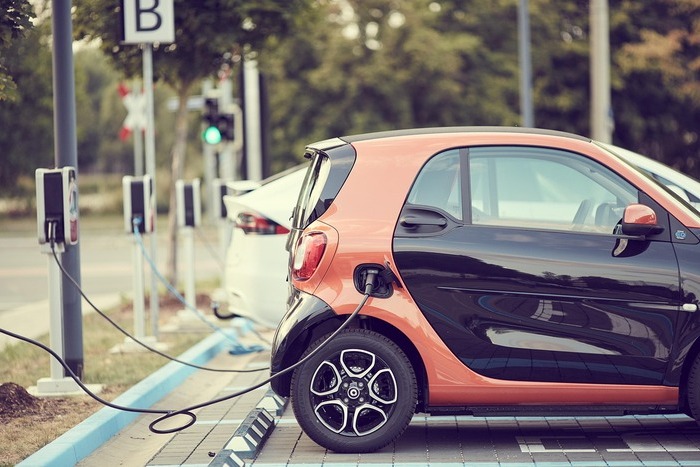From solar cells to electric cars, GST cuts promise cheaper clean energy and new momentum for manufacturers
Ease the burden of clean energy
The reforms have significantly slashed the Goods and Services Tax (GST) on various components essential for green technologies, including renewable energy and electric vehicles. This reduction directly addresses the higher tax burden on clean manufacturers, making the production of clean energy components more expensive. By lowering the tax rate on inputs, the government has made green energy technologies, from solar power to electric vehicles, more financially viable and attractive to investors and consumers alike.
Lower capital cost will make the technology affordable while making it attractive to lenders and investors
A major barrier to renewable energy adoption is high capital cost. The GST on several renewable energy components, including solar cells, windmill equipment, and biogas plants, will be slashed from the 4th week of this September from 12% to 5%. The decrease in capital cost can ease the burden for renewable energy developers and households.
The lower GST can also improve the bankability of renewable energy projects and improve investors’ returns, particularly for the distributed solar sector, which has not grown at a desired and expected rate. As renewable energy developers are expected to retain a portion of the GST reduction benefits, the credit profile of RE projects should improve, possibly resulting in further reduction in debt cost. A lower debt cost, along with lower equity capital contribution compared to earlier RE projects, can improve the return on investment, ceteris paribus. This is at a time when return on equity investment in the renewable energy utility segment has reduced to below the low teens, not very attractive for equity investors.
Can indirectly improve the financial position of DISCOMs and consumers
Renewable energy developers would pass on a portion of the benefits to consumers, ranging from Rs. 0.10 to Rs. 0.17, a major boost for Distribution Companies, who are going through a severe financial constraint, and also consumers directly buying electricity from these developers. The slashed GST rate would also drive demand for distributed solar PV from Corporations and households, who are increasingly finding an alternative and cheaper source of electricity.
A major boost to clean energy manufacturing
India is heavily relying on imported renewable energy components, mostly from China — a risky proposition for the country’s energy security, as it aims to transition to a green energy system. Higher demand for locally manufactured renewable energy components will support Indian companies to scale up production. Economies of scale of clean energy components can reduce the cost of production per unit; large-scale production is enabling Chinese renewable energy manufacturers to reduce production cost significantly compared to their peers in other countries, including India. Higher production volume can offer a necessary fillip to Indian manufacturers to compete in domestic and international markets.
Electric vehicle: gains for consumers and manufacturers
The electric vehicle (EV) segment, low-priced and luxury, is another beneficiary of GST reform — tax reduced from 18% to 5%. Although there are several schemes by the federal and central government supporting the EV sector, EVs are still expensive in several segments compared to combustion vehicles. The tax reduction should drive sales of EVs. Besides, EV manufacturers will also gain from the production efficiency gained from higher production volume. The reform was brought at a time when most of the pure play EV manufacturers are making losses as all of them are striving to sell EVs at a competitive price compared to combustion vehicles. EV manufacturers may not share all the GST reduction benefits with consumers, but they will help them to stop cash flow bleeding and encourage investors to infuse more capital in the sector.
Could marginally benefit thermal power sector
The benefits of the removal of compensation cess on coal will be partially offset by the increase in tax rate, from 5% to 18%, on coal and lignite. The decrease in thermal power is expected to be passed on to DISCOMs — several states’ DISCOMs, which direly need to improve their financial profiles and reduce the burdens of state governments. Improved financial performance of state DISCOMs will help power producers, including renewable energy power producers.
Challenges galore
A key challenge associated with tax reform is an inverted duty structure — raw materials are taxed at a higher rate than finished products. Companies initially pay a higher rate to the exchequer, but wait to claim refunds on the excess taxes paid on raw materials purchased. The lower GST rate will increase the refund claim for a larger block of capital in the form of deferred tax assets. Although the government has assured to expedite the refund process, it is too early to pass judgment.
While a tax cut for clean energy technologies is a positive sign for India’s green transition, it needs complementary policy and regulatory measures. There are still several challenges associated with the clean energy transition, including delays in signing PPA, land acquisitions, project cancellations, lack of availability and affordability of financing, and, above all, poor financial profiles of DISCOMs. Accelerating the clean energy transition needs supporting measures across the economic system, including political willingness, structural reform of the electricity sector, institutional innovation, and financial sector reform.
Labanya Prakash Jena is Director at Climate and Sustainability Initiative (CSI), and Advisor at Climate Trends. Views expressed are personal
About The Author
You may also like
Lula Pitches Fossil Fuel Phase-Out at COP30, But Can a Divided World Agree?
Renewable is elbowing out coal: Can it continue the growth momentum?
Rising Global Energy Demand Fuel Security Threats: WEO Report
Energy Transition Doesn’t Require Large Climate Finance: Report
Coal Addition Beyond the National Electricity Plan 2032 Uneconomical: Report

